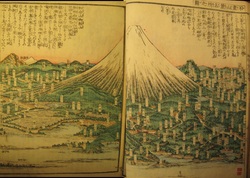
In this post I will give a brief introduction to the setsuyōshū (節用集) genre. In the future I plan to write some posts on some of the content of these books, so this introduction felt necessary to get out of the way first.
The setsuyōshū are a kind of dictionary with encyclopedic elements. When the genre first surfaced in the Muromachi period (1336-1573), however, they only contained a dictionary part. These dictionary-only setsuyōshū were copied by hand and were used by the elite (priests, nobility) for artistic and bureaucratic purposes. Such setsuyōshū are usually referred to as "old-book setsuyōshū" 古本節用集.
In the Edo period (1600-1868), however, the genre underwent major changes. Because factors such as the commercialization of the printing press, ever increasing literacy skills among the people, more time for leisure in times of peace, and improved economic conditions, books were printed and published in ridiculous amounts. Along with this revolution of the printing culture, publishers started to add more and more information to the setsuyōshū genre, making them into everyday encyclopedias. These books were immensely popular, and we can assume that most people who were economically fit had access to one. They were the go-to source whenever people needed information quickly, much like a Wikipedia of the day. These kinds of setsuyōshū are commonly called "encyclopedia-type setsuyōshū" (百科型節用集).
The setsuyōshū are a kind of dictionary with encyclopedic elements. When the genre first surfaced in the Muromachi period (1336-1573), however, they only contained a dictionary part. These dictionary-only setsuyōshū were copied by hand and were used by the elite (priests, nobility) for artistic and bureaucratic purposes. Such setsuyōshū are usually referred to as "old-book setsuyōshū" 古本節用集.
In the Edo period (1600-1868), however, the genre underwent major changes. Because factors such as the commercialization of the printing press, ever increasing literacy skills among the people, more time for leisure in times of peace, and improved economic conditions, books were printed and published in ridiculous amounts. Along with this revolution of the printing culture, publishers started to add more and more information to the setsuyōshū genre, making them into everyday encyclopedias. These books were immensely popular, and we can assume that most people who were economically fit had access to one. They were the go-to source whenever people needed information quickly, much like a Wikipedia of the day. These kinds of setsuyōshū are commonly called "encyclopedia-type setsuyōshū" (百科型節用集).
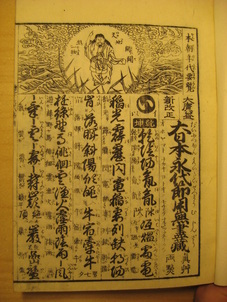
Although new parts were added, the dictionary part remained the biggest part of most editions, so let's have a quick look at how the dictionary works. On the left hand you see the first page of the dictionary part from the Eitai Setsuyō Mujinzō (永代節用無尽蔵) (1849). This was one of the most popular editions, if not the most. In this particular edition the dictionary part takes up a little bit less than two thirds of the total pages, although as you can see from the image on the left there is also a top row of encyclopedic information on these pages. This particular page shows the beginning of Japanese history which continues all the way to the year the book was published.
The entries in the dictionary are organized on two levels. First it is organized in the iroha-order (the ABC of pre-modern Japan), as opposed to the gojūon-order (the ABC of modern Japan). On the picture above you can see the first syllable i (い). Underneath each syllable, the entries are organized according to various categories. The number of categories used varied between different editions, but the 13 categories used in the Eitai Setsuyō Mujinzō seems to have been the most standard. The categories are as follows:
The entries in the dictionary are organized on two levels. First it is organized in the iroha-order (the ABC of pre-modern Japan), as opposed to the gojūon-order (the ABC of modern Japan). On the picture above you can see the first syllable i (い). Underneath each syllable, the entries are organized according to various categories. The number of categories used varied between different editions, but the 13 categories used in the Eitai Setsuyō Mujinzō seems to have been the most standard. The categories are as follows:
- 乾坤: Stands for heaven and earth or the universe. Includes words on the sun and the moon, celestial bodies and stars, rain and snow, winds and clouds, and other natural phenomena, as well as famous places, palaces and so forth.
- 時候: Stands for seasons or time. Includes various names for the seasons, months, days and so forth.
- 神仏: Stands for gods and buddhas. Names of gods and buddhas are included here, as well as names for temples and shrines.
- 官位: Means office and rank. Names of official positions, court titles and so forth are included in this category.
- 名字: Means name and includes exactly that, names.
- 人倫: Means human relations. Words on family, friendship, etc.
- 支体: Stands for limbs of the body. Includes words about the human body.
- 食服: Means food and clothes and includes words in those categories.
- 器財: Means tools and utensils. Hammers, spades, pots and pans. You name it, it's in this category.
- 気形: Means living things and includes words on animals.
- 草木: Stands for grass and trees and includes words on plants etc.
- 数量: Means quantity or volume. Includes number words and measurements.
- 言語: Simply means language or words. Includes mostly what does not fit in elsewhere like verbs, particles etc., but also common phrases and flowery words.
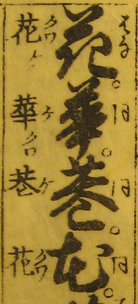
The dictionary was mostly used to look up the writing of the Chinese character of an indigenous Japanese word. So if you were, for instance, looking for the word hana はな (the Japanese word for flower), you would first find the syllable ha (the third one in iroha-order). Then you would find the appropriate category, in this case the grass and trees category (草木) and find the word written in kana (the Japanese "alphabet") on the right side of the character. The image on the right shows what you would find if you used the Eitai Setsuyō Mujinzō. It shows three different characters that mean flower in Chinese, and one of the characters is written twice in two different handwritten forms. On the left side the square style of the characters are written, as well as the "Chinese" reading of the character (on-yomi). If you are familiar with modern Japanese, you probably noticed that the kana on the upper right does not look at all like はな. This is because it is written in an older set of kana, now dubbed hentaigana (変体仮名). This ha developed from the kanji 者 as opposed to the modern one that developed from 波. The na is actually the same as な only written a little bit differently. It developed from 奈. I will write about kana and hentaigana in greater detail in a future post.
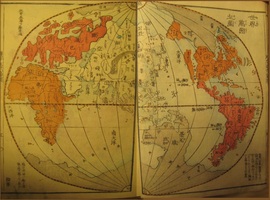
Although the dictionary part of setsuyōshū is very interesting, to me the encyclopedic parts are much more intriguing. The dictionary parts have also been well studied by historical linguists, while the encyclopedic parts have barely been touched by anyone. This is a bit perplexing, because it is well known that it was a very popular genre. I will just give a very brief overview of some of the typical entries that appear in setsuyōshū. Somewhere at the beginning of the setsuyōshū there is typically a map of Japan, and in some also a map of the world. Maps of the three metropolises, Edo, Kyoto and Osaka also often appear. Scattered through the books are also illustrations and textual information about various famous places throughout Japan, such as the illustration of Mt. Fuji at the top of this post.There are instructions on good etiquette, astrology, palm-reading. Illustrations and information about famous warriors and poets, warrior equipment and catalogs of elite samurais, their retainers and how many koku rice they are worth. Rules and tactics of the games of shōgi (将棋) and go (碁), information about festivals, shrines and temples, tea ceremony, and a plethora of various subjects are also available. In other words, you can find just about anything in these books.
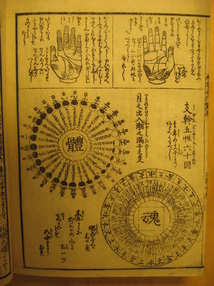
One of the fascinating aspects of the setsuyōshū genre is that most, if not all, of the encyclopedic information it contains is taken from somewhere else; it is just copy-pasted if you will. The competition among various editions of setsuyōshū was fierce, so it is reasonable to assume that the compilers of these books wanted to include exactly the kind of information the consumer wanted. Thus, the setsuyōshū can be seen as a looking glass into the information that the people deemed relevant and interesting at the time. The study of setsuyōshū can therefore be seen as a very useful shortcut of studying popular knowledge of early modern Japan.
One of the important things we can deduce from the study of these books is how a new knowledge culture emerged in the early modern period. Whereas a lot of the typical information in the setsuyōshū - such as the tea ceremony or etiquette - were reserved for the elite in pre-Edo times, this kind of information now had become mass culture. Thanks to the improved informational networks such as the gokaidō road-network the books also spread to the far reaches of the country where it would be hard to come by in earlier times. The setsuyōshū genre can thus be said to be a testimony of a spread of knowledge and information both "downwards" socially and outwards geographically.
That's it for this brief introduction of the setsuyōshū genre. I will post more detailed descriptions of some of the information in the books in the near future. I've included a small gallery of some setsuyōshū pages below. All images used in this post are from the Eitai Setsuyō Mujinzō from the Library at the University of Oslo and are taken by myself.
One of the important things we can deduce from the study of these books is how a new knowledge culture emerged in the early modern period. Whereas a lot of the typical information in the setsuyōshū - such as the tea ceremony or etiquette - were reserved for the elite in pre-Edo times, this kind of information now had become mass culture. Thanks to the improved informational networks such as the gokaidō road-network the books also spread to the far reaches of the country where it would be hard to come by in earlier times. The setsuyōshū genre can thus be said to be a testimony of a spread of knowledge and information both "downwards" socially and outwards geographically.
That's it for this brief introduction of the setsuyōshū genre. I will post more detailed descriptions of some of the information in the books in the near future. I've included a small gallery of some setsuyōshū pages below. All images used in this post are from the Eitai Setsuyō Mujinzō from the Library at the University of Oslo and are taken by myself.
Sources and recommended reading:
Berry, Mary Elizabeth. Japan in Print: Information and Nation in the Early Modern Period. Berkeley, Calif.: University of California Press, 2006
Eitai Setsuyō Mujinzō. Kyōto: Katsumura Jiuemon ...[et al.], 1849.
Kornicki, Peter F. The Book in Japan: A Cultural History from the Beginnings to the Nineteenth Century, Handbuch Der Orientalistik, 5. Abteilung, Japan. Leiden: Brill, 1998.
Yokoyama, Toshio. "Even a Sardine's Head Becomes Holy: The Role of Household Encyclopedias in Sustaining Civilisation in Pre-Industrial Japan." In SANSAI: An Environmental Journal for the Global Community, 41-57, 2006.
———. "In Quest of Civility: Conspicuous Uses of Household Encyclopedias in Nineteenth-Century Japan." Zinbun 34, no. 1 (1999): 197-222.
Berry, Mary Elizabeth. Japan in Print: Information and Nation in the Early Modern Period. Berkeley, Calif.: University of California Press, 2006
Eitai Setsuyō Mujinzō. Kyōto: Katsumura Jiuemon ...[et al.], 1849.
Kornicki, Peter F. The Book in Japan: A Cultural History from the Beginnings to the Nineteenth Century, Handbuch Der Orientalistik, 5. Abteilung, Japan. Leiden: Brill, 1998.
Yokoyama, Toshio. "Even a Sardine's Head Becomes Holy: The Role of Household Encyclopedias in Sustaining Civilisation in Pre-Industrial Japan." In SANSAI: An Environmental Journal for the Global Community, 41-57, 2006.
———. "In Quest of Civility: Conspicuous Uses of Household Encyclopedias in Nineteenth-Century Japan." Zinbun 34, no. 1 (1999): 197-222.
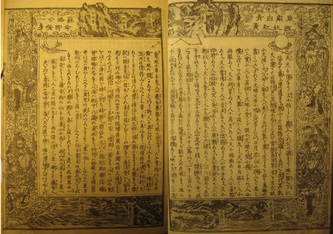
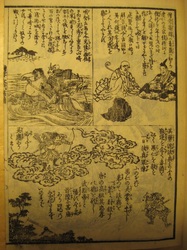
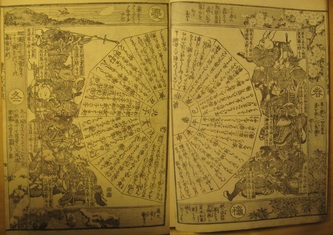
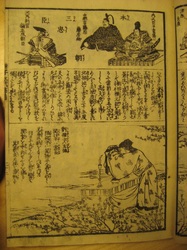
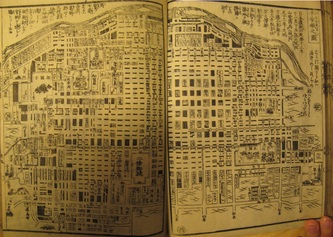
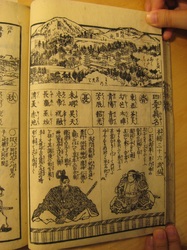
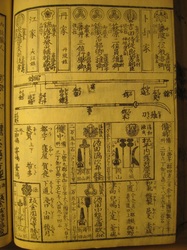
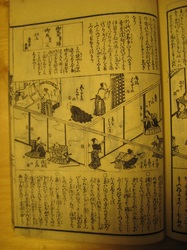
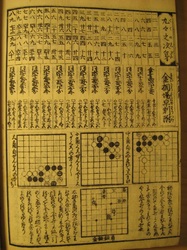
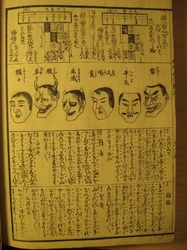
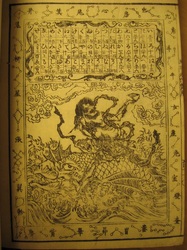
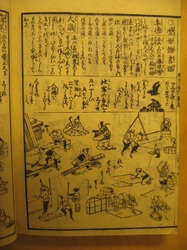

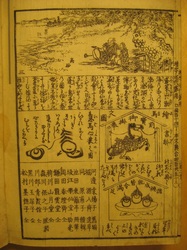
 RSS Feed
RSS Feed
